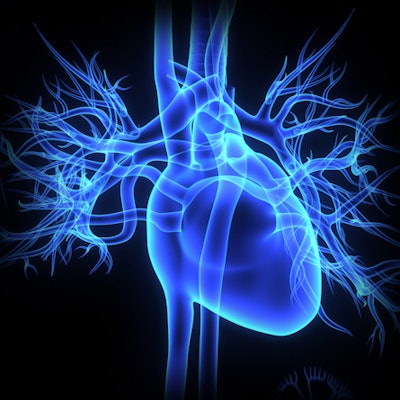
The combination of information from cardiac MRI and iodine-123 metaiodobenzylguanidine (I-123 MIBG) SPECT shows promise for improving current ablation strategies for ventricular tachycardia (VT), according to research published in the January issue of the Journal of Nuclear Medicine.
VT ablation is a proven treatment for arrhythmias in patients with a history of heart attacks, but identifying the area of increased scar tissue responsible for current and future arrhythmias is a challenge. As many as 50% of patients experience a recurrence in the six months after an ablation.
"The amount of scar tissue can often account for more than half of the left ventricle myocardium," said study co-author Dr. Timm Dickfeld, PhD, director of electrophysiology research at the University of Maryland, in a statement from the Society of Nuclear Medicine and Molecular Imaging (SNMMI). "Ablating such a large amount of the myocardium is often not desirable and very time-intensive."
In the study, the researchers followed 15 patients with ischemic cardiomyopathy who were scheduled for radiofrequency ablation for drug-refractory VT. Each patient underwent I-123 MIBG SPECT and cardiac MRI, as well as high-resolution bipolar voltage mapping. The three modalities were used to assess abnormal innervation, tissue scarring, and low-voltage area, respectively, and were then compared to determine which were present in the affected heart tissue (JNM, January 2019, Vol. 60:1, pp. 79-85).
While approximately 25% of the patients had abnormalities found by all three mapping tools, the largest of these areas had abnormal innervation only (18.2%), followed by cardiac scar tissue and abnormal innervation (14.9%) and MRI scar only (14.6%). In all cases, the origin of the ventricular tachycardia was localized to areas of tissue with abnormal innervation and MRI scar. By determining this location, clinicians can better target the VT ablation.



















